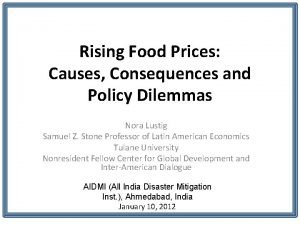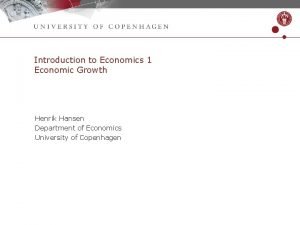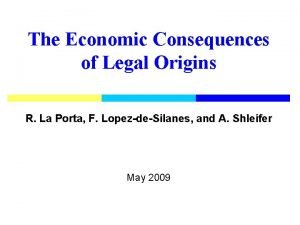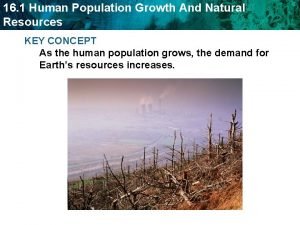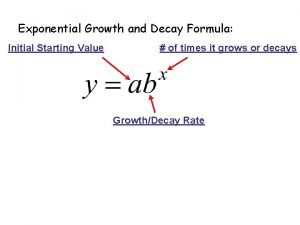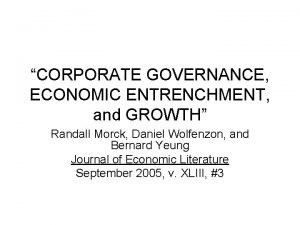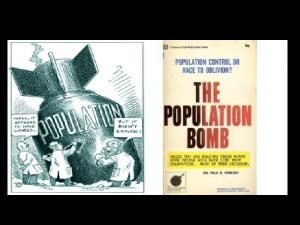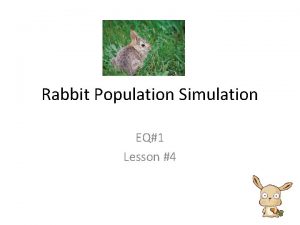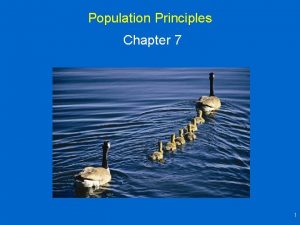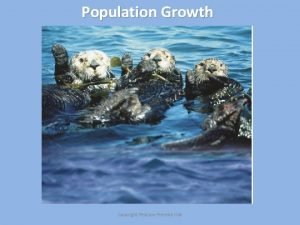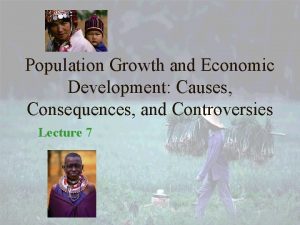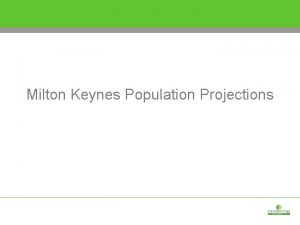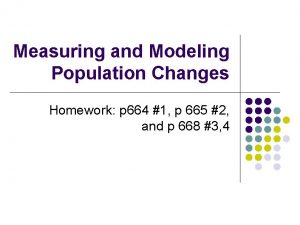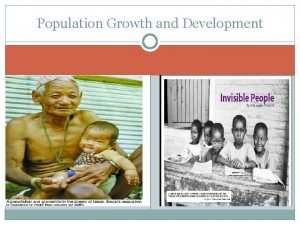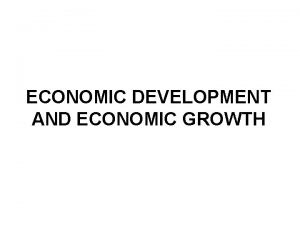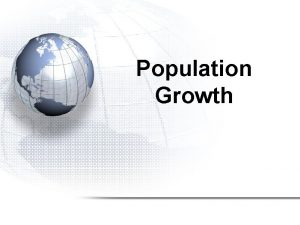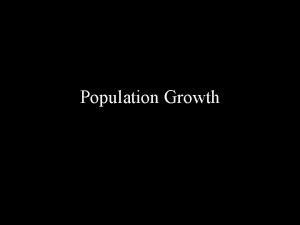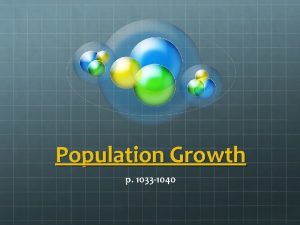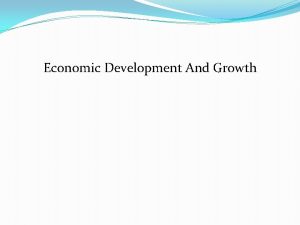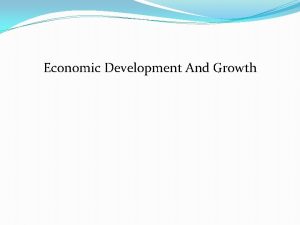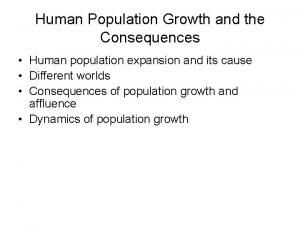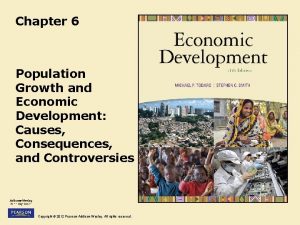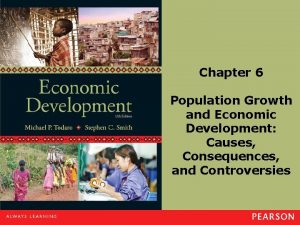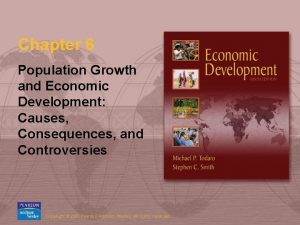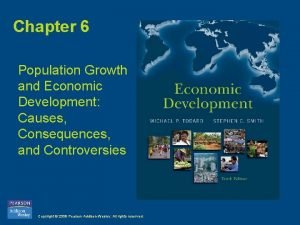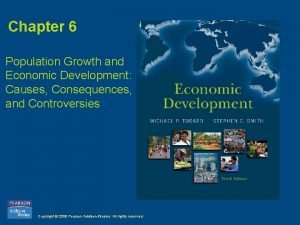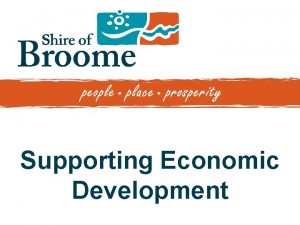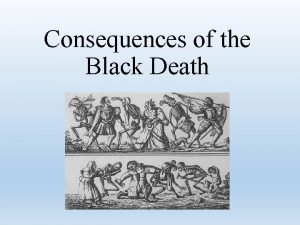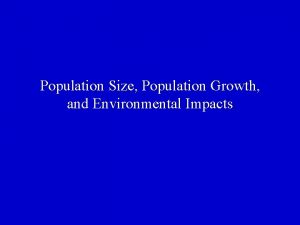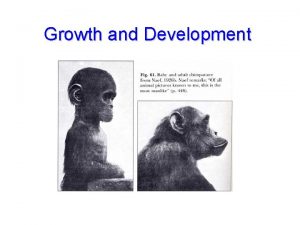Population Growth and Economic Development Causes Consequences and































- Slides: 31

Population Growth and Economic Development: Causes, Consequences, and Controversies Chapter 6

The Basic Issue: Is Population Growth Good or Bad? 1. Argument: – Population is a serious problem in developing countries? 2. Theories: – Demographic transition – Malthusian model – Microeconomic theory of fertility 3. Facts: – Some empirical evidences 4. Policies: – What can developing countries do?

1. 1 Population Growth Is A Problem! • Population and the Global Crisis – Poverty, low levels of living, malnutrition, ill health, environmental degradation, etc. • Population-poverty cycles – Population growth, saving, per capital income growth • 7 Negatives – Lower Y per head – Poor people bear burden of population growth – Large population limits educational opportunities – Health of women is harmed – Family food is limited – Environmental degradation occurs – Illegal international migration and over urbanization

1. 2 Population Growth Isn’t A Problem! • Other Issues – Underdevelopment – Resource Depletion and Environmental Destruction – Population Distribution – Subordination of Women • False Issue – Neocolonial dependence theory • Desirable – Consumer Demand – Economies of Scale – Labor Supply (sufficient-low cost) – Non-economic reasons

2. 1 The Demographic Transition • Stage I: high birthrates and death rates • Stage II: continued high birthrates, declining death rates • Stage III: falling birthrates and death rates, eventually stabilizing



2. 2 The Malthusian Model

Criticisms of Malthus’ model

2. 3 The Household Model • The microeconomic household theory of fertility

Demand for Children Equation Where Cd is the demand for surviving children Y is the level of household income Pc is the “net” price of children Px is price of all other goods tx is the tastes for goods relative to children

Demand for Children Equation Under neoclassical conditions, we would expect:


3. 1 Population Growth: Numbers








3. 2 Population Growth: Structures




3. 3 Population Growth: Relations – Population growth & income – Population density & income – Population growth & structure (Number & Structure) – Producer & consumer




4. Some Policy Approaches • What developing countries can do: – Long run: increase the price of child • opportunity cost of mother’s time • Cost of educating child – Short run: control fertility • • • Persuade people Family-planning programs Economic incentives and disincentives Redistribute population Coerce people Raise women’s social and economic status

 What is economic growth and development
What is economic growth and development Economic growth vs economic development
Economic growth vs economic development Rising food prices causes and consequences
Rising food prices causes and consequences Economic growth and development
Economic growth and development The economic consequences of legal origins
The economic consequences of legal origins Natural resources and population growth
Natural resources and population growth Exponential growth and decay
Exponential growth and decay Population ecology section 1 population dynamics
Population ecology section 1 population dynamics Section 1 population dynamics answer key
Section 1 population dynamics answer key Population ecology section 1 population dynamics
Population ecology section 1 population dynamics Population ecology section 1 population dynamics
Population ecology section 1 population dynamics Growth analysis
Growth analysis Primary growth and secondary growth in plants
Primary growth and secondary growth in plants Primary growth and secondary growth in plants
Primary growth and secondary growth in plants Vascular ray
Vascular ray Interest rates and economic growth
Interest rates and economic growth Economics chapter 13 vocabulary
Economics chapter 13 vocabulary Corporate governance and economic growth
Corporate governance and economic growth Proximate causes vs ultimate causes
Proximate causes vs ultimate causes Polygyny in animals
Polygyny in animals Rule of 70 in population growth
Rule of 70 in population growth What are the two types of population growth
What are the two types of population growth Modeling population growth rabbits answer key
Modeling population growth rabbits answer key Population growth curve
Population growth curve Population growth factors
Population growth factors Geometric vs exponential growth
Geometric vs exponential growth Why population growth is good
Why population growth is good Ideal population growth curve
Ideal population growth curve Define exponential population growth
Define exponential population growth Milton keynes population
Milton keynes population Biotic potential
Biotic potential Why environmental science is an interdisciplinary science
Why environmental science is an interdisciplinary science


